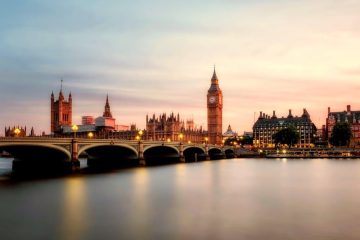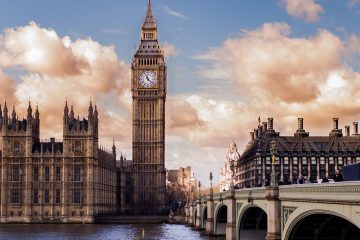Step back in time to the London of 1802, a city steeped in history, culture, and revolution. In this analysis, we delve into the essence of London during this pivotal period, exploring the intricacies of its society, politics, and literary landscape. Join us on a journey through the cobblestone streets and fog-filled alleys of this vibrant metropolis as we unravel the secrets and stories hidden within its bustling heart. Discover the allure and complexities of London in 1802, where tradition meets innovation, and where the echoes of the past shape the future.
Table of Contents
- Exploring the Poetic Language in “London, 1802”
- Unveiling the Historical Context of the Poem
- Analyzing the Themes of Patriotism and Morality
- Interpreting Wordsworth’s Call for Societal Change
- Recommendations for Deepening Understanding of the Poem
- Q&A
- Key Takeaways
<img class=”kimage_class” src=”https://yourlocallondon.com/wp-content/uploads/sites/23/2024/08/pexels-photo-6981062.jpeg“ alt=”Exploring the Poetic Language in “London, 1802″”>
Exploring the Poetic Language in “London, 1802”
In the renowned sonnet ”London, 1802,” Wordsworth delves into the essence of John Milton’s character. Through a tapestry of poetic language, he resurrects Milton’s spirit to lament the degraded state of England. Wordsworth’s vivid imagery and emotional depth serve as a tribute to Milton’s greatness and a critique of the society around him.The sonnet exudes a nostalgic sentiment as Wordsworth implores for Milton’s return to inspire a nation in moral decline. The use of symbolic language and rhetorical devices captivates readers, painting a stark contrast between the glorious past and the bleak present. Wordsworth’s poetic prowess shines through as he navigates themes of duty, virtue, and societal responsibility, inviting readers to reflect on the timeless relevance of these ideals in the ever-changing world.
Unveiling the Historical Context of the Poem
In the bustling streets of London in the year 1802, a poem emerges, capturing the essence of an era marked by industrial revolution and societal changes. Through the lens of poetic words, the city’s rich historical context comes alive, painting a vivid picture of the challenges and transformations of the time. Exploring the depths of this poem unveils a tapestry woven with the threads of history, offering a glimpse into the hearts and minds of those who walked the cobblestone paths of London centuries ago.Delving into the verses of the poem, we uncover themes of resilience, social disparity, and cultural evolution. The poet’s words serve as a portal, transporting us to a bygone era where political unrest and economic disparities cast shadows over the cityscape. By dissecting the imagery, symbolism, and language of the poem, we gain insight into the struggles and triumphs of Londoners during a pivotal moment in history. Through this exploration, the historical tapestry of “London 1802” unfurls, inviting us to connect with the past and reflect on the enduring legacy of a city shaped by the forces of change.

Analyzing the Themes of Patriotism and Morality
In examining the intersection of patriotism and morality in the stirring poem “London 1802,” we delve into the depths of societal values and the call for change. This literary piece eloquently captures the essence of a nation grappling with its identity, urging readers to reflect on the virtues of the past and the challenges of the present. Through a nuanced analysis, we uncover the layers of symbolism and meaning woven intricately into the fabric of this timeless work.Key Points:
- Contrast between the idealized past and the stark reality of the present
- Critique of societal decay and moral decline
- Invocation of historical figures to inspire a sense of national pride and duty
As we venture further into the thematic tapestry of “London 1802,” we are confronted with a poignant portrayal of disillusionment and a yearning for a return to principles long forgotten. The poem serves as a poignant reminder of the power of literature to provoke introspection and incite conversations about the moral compass of a nation. Through our exploration, we aim to unravel the intricate connections between patriotism, morality, and the enduring quest for societal renewal.
Insights:
- Emphasis on the role of poets as societal guides
- Examination of the relevance of historical context in shaping contemporary values
- Reflection on the enduring relevance of themes of patriotism and morality


Interpreting Wordsworth’s Call for Societal Change
William Wordsworth’s poem “London, 1802” serves as a poignant reflection on the state of society during that era. In his verses, Wordsworth beckons for a return to the virtues and values embodied by the revered poet John Milton. The call for a moral and spiritual reawakening is echoed throughout the poem, urging readers to contemplate the loss of integrity and purpose in society.
Wordsworth’s evocative language paints a picture of a society adrift, longing for guidance and inspiration. The poem’s emphasis on the need for ethical leadership and intellectual enlightenment resonates with readers even in the modern context. By delving into the themes of societal decay and the yearning for a higher standard of living, Wordsworth challenges us to reflect on our own values and actions. Through his timeless verses, Wordsworth prompts us to consider the impact of individual responsibility on the collective conscience, sparking a call to action for positive societal change.

Recommendations for Deepening Understanding of the Poem
In digging deeper into the essence of “London 1802,” it’s beneficial to explore various strategies that can enrich your understanding of this profound poem. Delving into its intricacies requires a blend of analytical techniques and emotional comprehension. Here are some recommendations to unravel the layers of meaning embedded within these timeless verses:Engage in Comparative Analysis: Compare the themes and stylistic elements of “London 1802” with other works by the same poet or within the same literary period. By drawing parallels and juxtaposing different pieces, you can unearth connections and gain a broader perspective on the poet’s intentions.
Historical Context Exploration: Understand the historical backdrop against which the poem was written. Research the societal, political, and cultural context of London in 1802 to grasp how these external factors may have influenced the poet’s portrayal of the city and its inhabitants. By immersing yourself in the era’s nuances, you can appreciate the poem’s relevance and impact in a more profound manner.
| Recommendation | Description |
| Symbolism Decoding | Uncover the symbolic meanings behind key elements in the poem to unveil hidden messages and deeper layers of interpretation. |
| Character Analysis | Examine the personas depicted in the poem to understand their roles, motivations, and contributions to the overall thematic tapestry. |
Q&A
**Q&A: Exploring the Depths of Wordsworth’s “London, 1802″**Q: What inspired Wordsworth to write the poem “London, 1802”?
A: Wordsworth was inspired by the deteriorating moral values in society during the early 19th century, which he contrasted with the virtues of the past.
Q: What are the key themes addressed in “London, 1802”?
A: The poem delves into themes of morality, nostalgia, social criticism, and the need for a return to the values upheld by the legendary figure of John Milton.
Q: How does Wordsworth depict London in the year 1802?
A: Wordsworth portrays London as a city tainted by moral decay, contrasting it with the idealized image of the poetic and virtuous Milton.
Q: What is the significance of John Milton in the poem?
A: Milton symbolizes the virtues of integrity, honor, and moral strength that Wordsworth believed were lacking in his contemporary society.
Q: How does Wordsworth use language and imagery to convey his message?
A: Wordsworth’s use of vivid imagery and emotive language creates a powerful contrast between the past and present, urging readers to reflect on societal values.
Q: What impact did ”London, 1802″ have on the Romantic literary movement?
A: The poem solidified Wordsworth’s position as a prominent Romantic poet, influencing later writers and poets to delve into themes of nature, morality, and social criticism.
Q: How does “London, 1802” resonate with readers in the modern era?
A: The poem’s timeless themes of social responsibility, moral integrity, and nostalgia continue to resonate with readers, prompting reflection on contemporary societal issues.
Explore the profound depths of Wordsworth’s “London, 1802” and immerse yourself in the poet’s poignant portrayal of morality, societal decay, and the enduring legacy of John Milton.





0 Comments